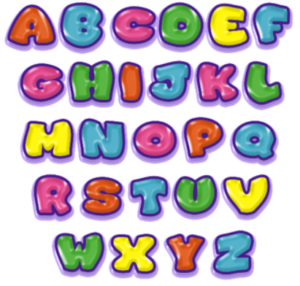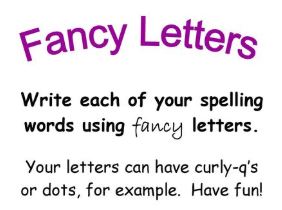01 July 24 and 08 July 24
How would you like to learn your spellings?
Year 1- want, what, with, any, many, you, your, who, how, saw
Year 2- all, ball, fall, small, wall, walk, talk, chalk, beanstalk, always
Spelling Test Date: Friday 12 July
17 June 24 and 21 June 24
Our new spellings are:
Year 1- have, has, were, where, when, give, gave, house, school, people
Year 2- cry, cries, fly, flies, dry, dries, try, tries, reply, replies
Spelling Test Date: Friday 28 June
This week you could rainbow write each word.

07 June 24 and 14 June 24
How do you want to learn you spellings this week? Have a look through our previous ideas. Tell your teacher which method you prefer.
Year 1- grander, grandest, fresher, freshest, slower, slowest, quicker, quickest, smaller and smallest.
Year 2- camel, tunnel, travel, towel, squirrel, metal, pedal, capital, animal and hospital.
Spelling Test Date: Friday 14 June
10 April 24 and 17 April 24
We keep spellings for two weeks. On the first week, children need to read and write the word using the ‘look, say, cover, write, check’ method. On the second week, they can write them using rainbow writing. There are some more ideas here too.


Year 1- jump, jumper, jumped, jumping, hunter, hunted, hunting, buzzed, buzzer, buzzing
Year 2- write, written, wrote, wrong, wrap, table, apple, bottle, little, middle
Spelling Test Date: Thursday 23 May (Friday 24 is a Training Day).
26 April 24 and 03 May 24
For our new spellings, please try:

Year 1
- cats
- dogs
- rocks
- trains
- brushes
- glasses
- witches
- boxes
- buzzes
Year 2
- race
- city
- space
- fancy
- ice
- knock
- knee
- know
- knitting
Our spelling test will take place on Friday 10 May
19 April 24 and 26 April 24
Have a go at writing your spellings in bubble writing.

Year 1
- think
- bank
- sunk
- honk
- wink
- witch
- fetch
- catch
- hutch
- stitch
Year 2
- who
- what
- where
- when
- why
- whole
- wild
- would
- should
- could
29 February 24 and 07 March 24
This week’s spellings are more common exception words (words that don’t follow the usual spelling rules). There are lots of ideas in our super spelling strategies to help you child learn them.
Idea: Draw a large flower and write a spelling word in each petal.

Year 1- who, what, when, why, which, how
Year 2- move, Mr, Mrs, old, only, parents, pass, past, path, people
Spelling test to take place on Friday 14th March
09 February 24 and 23 February 24
This week’s spellings are more common exception words (words that don’t follow the usual spelling rules). There are lots of ideas in our super spelling strategies to help you child learn them.
Perhaps you could draw a shape around each word to show the ascenders (letters that stick up high) and descenders (letters that go below the line).


Year 1
- Monday
- Tuesday
- Wednesday
- Thursday
- Friday
- Saturday
- Sunday
Year 2
- half
- hold
- hour
- improve
- kind
- last
- many
- mind
- money
- most
26 January 24 and 02 February 24
This week’s spellings are more common exception words (words that don’t follow the usual spelling rules). There are lots of ideas in our super spelling strategies to help you child learn them.

Year 1
- was
- we
- were
- where
- you
- your
Year 2
- every
- everybody
- eye
- fast
- father
- find
- gold
- grass
- great
19 January 2024 and 26 January 2024
This week’s spellings are ‘common exception’ words – words that don’t follow the usual spelling rule or pattern. We keep spellings for two weeks. On the first week, children need to read and write the word using the ‘look, say, cover, write, check’ method. On the second week, they can write them using rainbow writing. There are some more ideas here too.


Year 1
- there
- their
- they
- to
- today
Year 2
- child
- children
- Christmas
- class
- climb
- clothes
- could
- cold
- door
- even